Have you ever been in a club and felt the vibrations of a bass guitar or drum that was so deep and low it vibrated your body? Most likely, your chest and stomach? This is an example of VibroAcoustics—sound resonating our body. You’ve also likely experienced this phenomenon when a truck goes rumbling by and you feel the vibrations in the floor. Such sounds can sometimes be annoying and unpleasant, but they can also be very therapeutic when used with a different environment, understanding, and intention.
VibroAcoustics is the science of using low frequency sounds ranging between 25 Hz to 120 Hz. The therapeutic use of these frequencies is using LFS (low frequency sound) to create resonant vibrations in the human body, thus creating a healing effect down to a cellular level. The use of VibroAcoustics has been around us since ancient times when the low pulse of a large drum or a deep bass instrument was used to create entraining vibrations in people and influence heart beats.
The man credited with Vibroacoustic Therapy (VAT) was a scientist from Norway named Olav Skille. I first met Olav back in the 1986 in Ludenscheid Germany, at one of the first International Society for Music in Medicine Conferences. He was doing a presentation on VAT and I was doing one on the therapeutic benefits of vocal harmonics. We both presented again at another conference at the Eisenhower Medical Center in Rancho Mirage, California where I did a presented on “Sonic Entrainment”—how binaural beat frequencies could affect brainwaves. Both of these presentations were published in the book from “MUSICMEDICINE”.
Skille presented information on using low sound frequencies, including 40 Hz, 44 Hz and 55 Hz to lower blood pressure, reduce pain, increase mobility and reduce heart rate. He called this VibroAcoustic Therapy (VAT). These frequencies were also used to assist asthma and fibromyalgia. Essentially a deep tissue, low frequency internal sound massage, VibroAcoustic therapy (VAT) uses audio waves in the range of 25 Hz to 120 Hz and transmits sound to the body.
Skille demonstrated the positive healing effects for an extensive range of physical and mental health issues including depression, asthma, and fibromyalgia. Utilizing sound to produce vibrations that flow directly through the body, VibroAcoustic therapy (VAT) offers a non-invasive and drug free approach to health and wellness. Since sound vibrations travel five times more efficiently through water than air and since the human body is made up of over 70% water, VAT has been proven to provide a highly efficient method for the deepest cellular level body stimulation.
There have been many who have continued with VibroAcoustic Therapy—particularly with the development of sound chairs and bed. Dr. Lee Bartel has picked up a lot of Olav Skille’s work and in his research which he presents in this TedX talk, discusses the potential use of LFS (low frequency sound) for conditions that will enhance blood flow and increase bone density. He has found these LFS are therapeutic for pain, depression, insomnia, stress, and Alzheimer’s. Some other conditions that may benefit are Parkinson’s and stroke as well as for cardiac treatment. Most of these frequencies are utilized through chairs, beds and loungers that promote low frequency sounds.
While Lee Bartel focuses on 40 Hz for the frequency that he uses and expresses this frequency as a metaphor (he calls the entrainment from this frequency, the “Cricket Principle”), I would suggest that 40 Hz is simply one of the frequencies that Dr. Skille used in his research. There are many many more frequencies that fall within the bandwidth of 25 – 120 Hz that affect us. Olav Skille was still searching for the ideal one when last we spoke, but I know he agreed that there were many different frequencies that had positive therapeutic psycho-acoustic effects. I’m sure you will find Dr. Bartel’s talk to be quite encouraging. We are really hopeful that more research in low frequencies will occur.
I would also like to mention that the use of certain tuning forks such as the Sacred Ratio Vibro Tuners which utilize frequencies of 64Hz, 96 Hz and a difference tone of 32 Hz can also produce such low frequencies. They are especially effective when they are properly applied to different acupuncture meridian and reflexology points. With the proper setting and intention, these tuning forks can be highly therapeutic.
In addition, from my perspective, the ability of the human voice during humming is the most powerful vibroacoustic frequency we can experience making our own sounds. When you hum, you can literally feel the frequencies travel through yourself creating soothing vibrations. In THE HUMMING EFFECT, we discuss many peer reviewed therapeutic benefits of humming, including reduction of heart rate and blood pressure, as well as the creation of various neuro-chemicals such as melatonin and nitric oxide. There is even a chapter called “The Humming Hypothesis” that discusses the potential of the VibroAcoustic effects of humming to create new neural-synaptic connects. Lee Bartel’s research seems to indicate that the low frequency of VibroAcoustic Therapy has this potential as well. As he notes: “stimulating cells with sound can reduce the impact of health problems”.
It is wonderful that Olav Skille’s work with VibroAcoustic Therapy is continuing to manifest. Different frequencies have many different therapeutic effects. I trust that this type of groundbreaking researching will further our understanding of the healing effects of sound and music.







